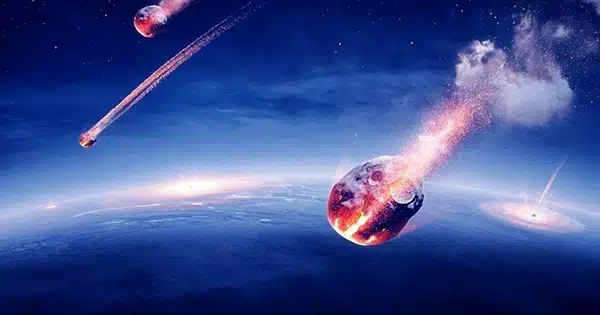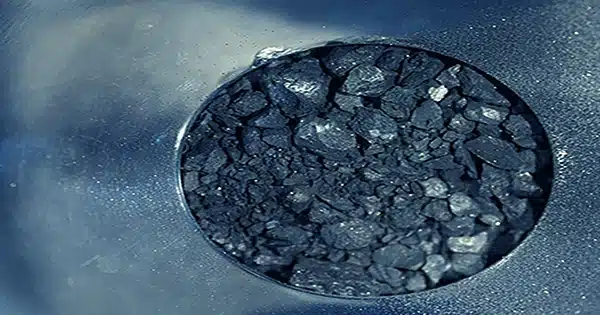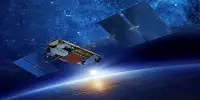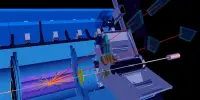In fragments taken by Japan’s Hayabusa2 expedition from the near-Earth asteroid Ryugu, organic molecules have been found.
Researchers discovered uracil, one of the components of RNA, and vitamin B3, also known as niacin, when they examined the samples, which were taken from two separate places on the asteroid. (a key cofactor for metabolism in living organisms).
A nucleobase, or substance having nitrogen, is uracil. It is one of the five nucleobases that make up DNA and RNA, the proteins and molecules that hold the genetic data and directions vital for living creatures’ cells.
The results of the research were reported in the Tuesday issue of Nature Communications.
Ryugu is a diamond-shaped, carbon-rich asteroid that is about 3,000 feet (1 km) broad. The first attempt to bring an underground asteroid sample back to Earth was Hayabusa2.

A 33-foot (10-meter) broad impact crater was made by the Japanese Aerospace Exploration Agency mission after it took one sample from the asteroid’s surface and discharged a copper “bullet” into it. In July 2019, a sample was taken from this crater. The sample was then delivered to Australia by Hayabusa2 during a flyby of Earth in December 2020.
Earlier studies of Ryugu’s samples revealed the presence of amino acids and other molecules, and meteorites that crashed to Earth have also been discovered to contain uracil and niacin.
In some carbon-rich meteorites, scientists have previously discovered nucleobases and vitamins, but there has always been concern about contamination from contact with the Earth’s atmosphere, according to the study’s principal author, Yasuhiro Oba, an assistant professor at Hokkaido University in Japan. Contamination can be ruled out because the Hayabusa2 mission immediately gathered two samples from the asteroid Ryugu and sent them to Earth in sealed capsules.
Building blocks of life in space
The researchers found the molecules when particles gathered from Ryugu were soaked in hot water and the findings were examined using various observational techniques, including liquid chromatography and mass spectrometry.
Then, the researchers found the uracil, niacin, and other organic nitrogen-containing chemical signatures.
Other organic compounds, such as a variety of amino acids, amines, and carboxylic acids, which are present in proteins and metabolism, respectively, were also discovered in the sample, according to Oba.
The results from Ryugu’s samples collectively contribute to the mounting proof that the elements of life were first brought to Earth by meteorites billions of years ago from space.
Before our solar system even existed, the molecules most likely first developed through photochemical processes in ice in deep space, according to Oba.
Further study of asteroid composition
The molecules’ amounts in the two samples varied, but this was probably caused by their exposure to space’s harsh atmosphere. Ryugu might have once been a fragment of a bigger celestial body, like a comet, before being shattered into pieces by impacts with other asteroids.
There is no question that asteroids and meteorites have given the Earth physiologically significant molecules like amino acids and nucleobases, according to Oba. We anticipate that they could be particularly important for primordial development on early Earth.
It’s also conceivable that some of the same components of life may have been transported by asteroids that collided with other worlds in our solar system.
A minimum of their constituents, such as amino acids and nucleobases, may be present everywhere in space, according to Oba. “I cannot say that the presence of such ingredients directly leads to the emergence/presence of extraterrestrial life,” he said.
Scientists are now interested in learning how prevalent these compounds are in meteorites. Fortunately, NASA’s Origins, Spectral Interpretation, Resource Identification, Security-Regolith Explorer, or OSIRIS-REx, the mission will bring a sample from another asteroid called Bennu to Earth in September.
According to Oba, the finding of uracil in the Ryugu samples supports the prevailing ideas concerning the origin of nucleobases in the early Earth. This year, NASA’s OSIRIS-REx mission will return fragments from the asteroid Bennu, and a comparison of the asteroids’ compositions will add more evidence to support these hypotheses.














